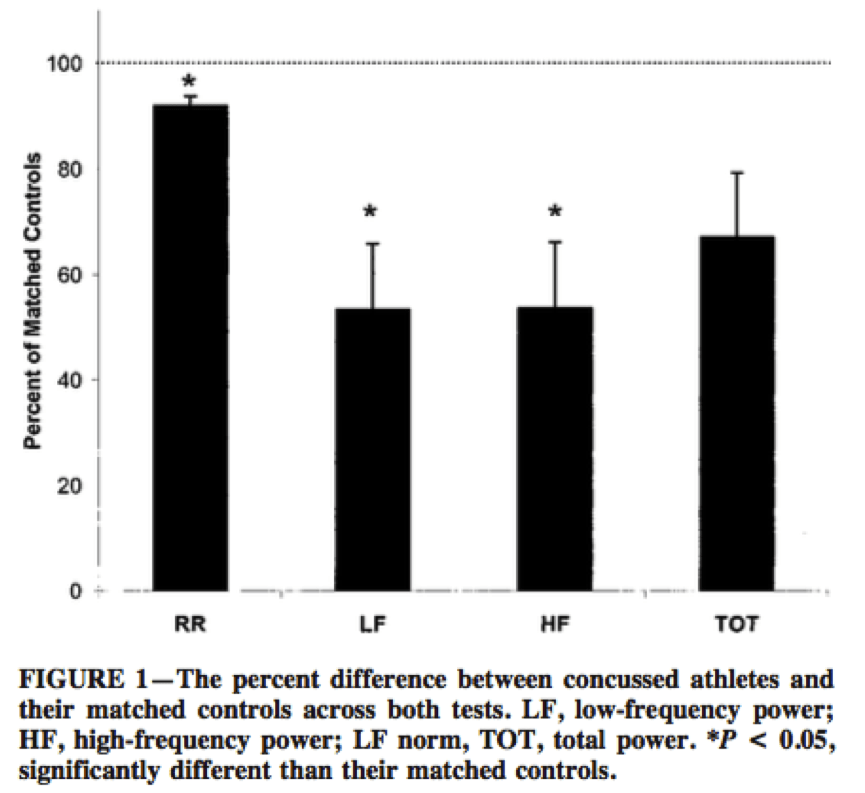Who, what & why
Traumatic brain injuries, such as concussion, are unfortunately an occupational hazard in many contact sports. As I write this, sad news was announced today that 23 year old rugby player Lilly Partridge had died following a head injury during training.Ice hockey is a sport that we associate with frequent and sometimes violent impacts to the body, and concussions are quite common.

Researchers at Simon Fraser University in Canada decided to investigate whether heart rate variability (HRV) measurements could add to the established diagnosis performed shortly after traumatic brain injury events and whether these could help establish readiness for return to play. The reason for looking at HRV was anecdotal evidence suggesting that physiological stress may still be present in an athlete who has no symptoms of concussion at rest and as we know, vagal HRV is a sensitive indicator of stress that is easily measured. The hypothesis was that neurological dysfunction at rest would also be amplified during exercise.
What did they do?
They selected 28 male players for this study from the Pacific International Junior Hockey League, of whom 14 had sustained a very recent concussion, diagnosed using standard symptoms. The other 14 controls were teammates chosen to match the injured ones as closely as possible in age, experience and playing position.
Two days after the reported concussion, the entre group had ECGs taken in a seated position, from which heart rate (HR) and HRV were calculated.Once the symptoms of the concussed group had receded at rest (an average of 5 days post impact), they performed a steady, low intensity aerobic exercise test, during which HR and HRV were again calculated. This exercise test was repeated after another 5 days.
What did they find?
They found no significant differences at rest between the concussed and control athletes. During exercise tests, however, it was a different story, with all HRV being lower in the concussed athletes compared to controls: HF power in concussed players was on average only 50% of that of the uninjured players, whereas heart rate during exercise was about 10% higher in the concussion group.

What does it mean?
The findings of decreased HF & LF HRV are consistent with previous studies, which have shown significant effects up to 4 months after severe head trauma. These effects differ from the more common shift in emphasis from HF to LF HRV in exercise and other mild stress situations. The authors suggest this represents an uncoupling of autonomic responses due to neurological damage, and that the degree of uncoupling is proportional to the severity of the injury.
The implication of this work is that HRV as an objective measure of unconscious nervous system function might be added to the current criteria of symptoms questionnaires, and further more that HRV tests during light exercise might help determine more accurately when a player is ready to return to training and then to resuming contact sport play.
By Simon Wegerif

Hi Simon do you have a copy of this trial, I would reaally like to see it if so. I am a brain wellness coach in Canada who uses the ithleate and also work. With clients using a technology called Brainwave optimization that helps balance and relax brain energy that then influences HRV. Really like what you have written here. Please let me know